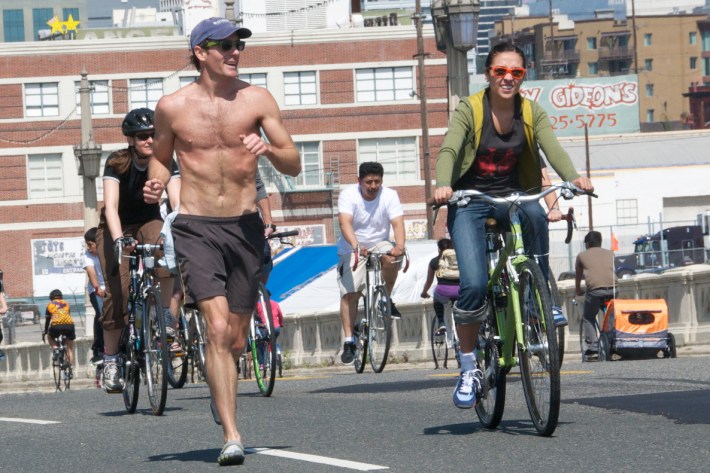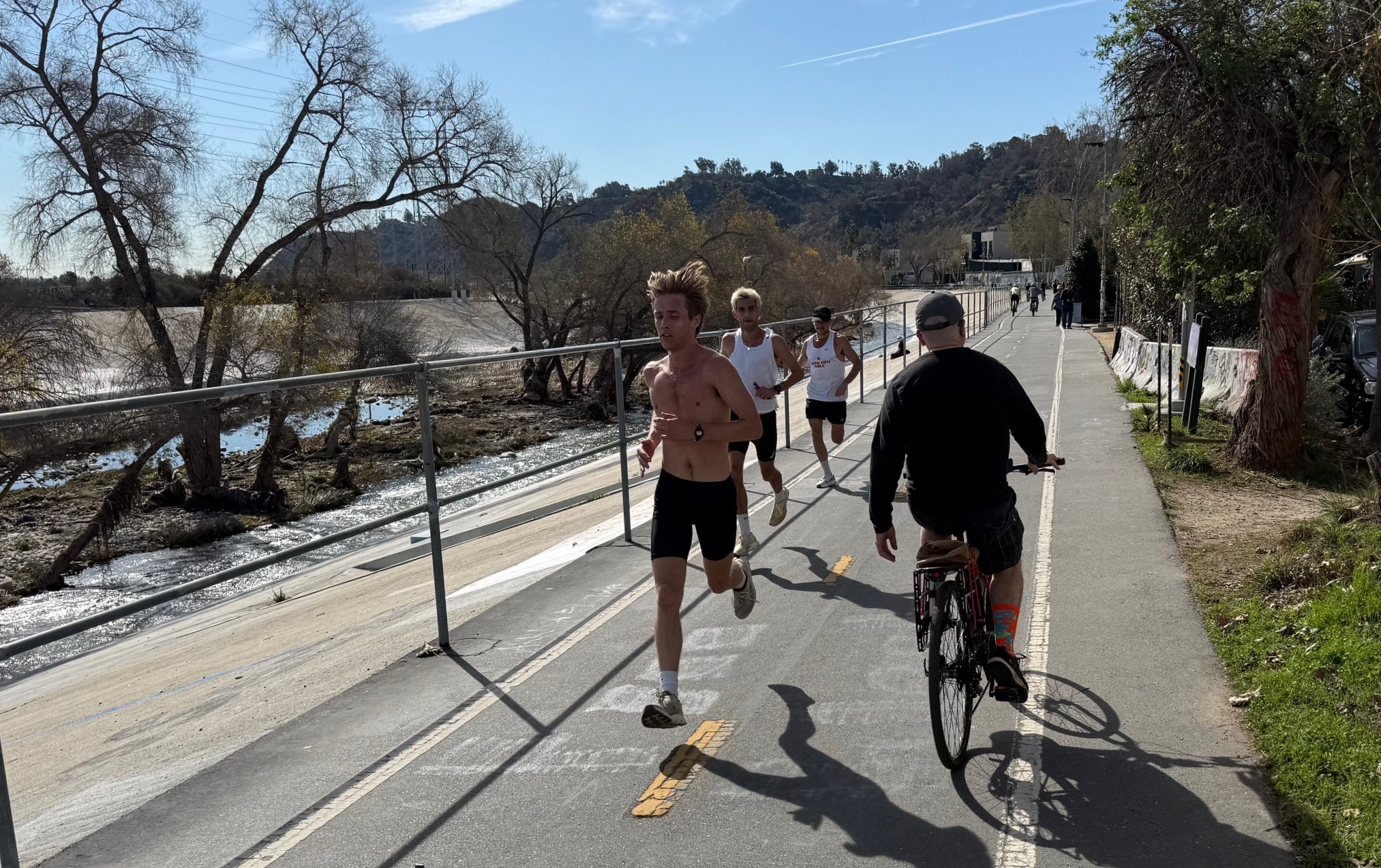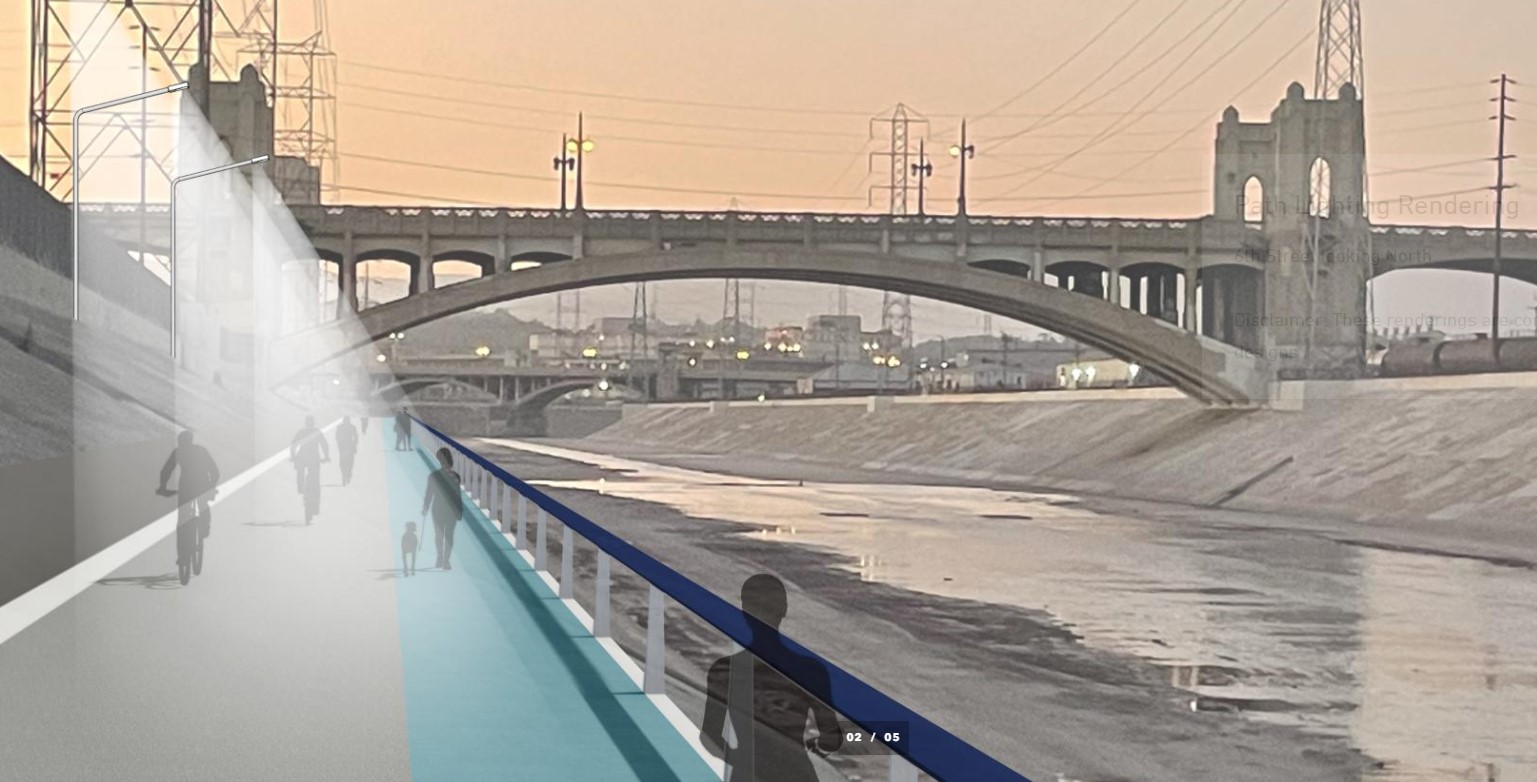(In a wild coincidence, many of the country's top urban planners will be in town for CicLAvia this year as the American Planning Association holds their annual conference beginning this Saturday in Downtown Los Angeles. We reached out to a local planning expert, USC Professor and Director of Undergraduate Programs, David Sloane. It would so happen that Sloane's newest book, Planning Los Angeles, will also be released this week. - DN)
Tax day this year has a very different meaning for thousands of Angelenos, who will free themselves of their cars and enjoy LA from a different angle. CicLAvia is familiar to this blog’s readers, so I wouldn’t recount its history. Instead, let’s ask the question: Does it matter that we experience LA differently, even for one day on only a few miles of downtown streets?
I would answer a definite yes.
Why? In my edited book, Planning Los Angeles, Aaron Paley and Amanda Berman remind us that CicLAvia is a civic event that brings together people of many ages, races and ethnicities, from many neighborhoods around Los Angeles for a momentary “ephemeral event” where they walk, ride, talk and laugh together. Such moments are crucial to the public life and culture of any city, but especially our city. LA is not the stereotype that the world would like to believe – where no one walks, no one plans, and no one cares about anything but Hollywood – but LA is still a city that is emerging from what Marlon Boarnet calls the “interstate era” into a “multi- modal” future.
Our emergence from a moment where the car became so dominant, and where our public culture was narrowed and damaged, has been occurring for over a generation now, with the demand for shopping streets instead of shopping malls, the resurgence of downtown, the late night vibrancy of Hollywood, Santa Monica, and other spots, and the dampening of safety fears on our streets. Policy and planning
have aided that emergence, from the adaptive reuse ordinance to the “everyday urbanism” discussed in Planning Los Angeles.
Yet, we are not there yet. Too often Angelenos see the world through the windshield of the their car, not imagining that they can safely move around their neighborhoods by other means, and do it faster and more efficiently. CicLAvia helps us understand that the perception of the long way from Hollywood to Boyle Heights is actually doable for most of us on a bike, or that walking several blocks is fun, and you can see buildings, signs, people (who doesn’t like to people watch in LA?) are easier.
The hope, for me, is that when people go home from CicLAvia they translate that momentary inspiration into riding their bikes to a friend, walking to a grocery store or local restaurant, say hello to someone they see on the street, and engage with our city and its people. If CicLAvia does that, and I think for some participants it does, that is another step forward out of the interstate era into a new, more
environmentally friendly and socially exciting urban future.







